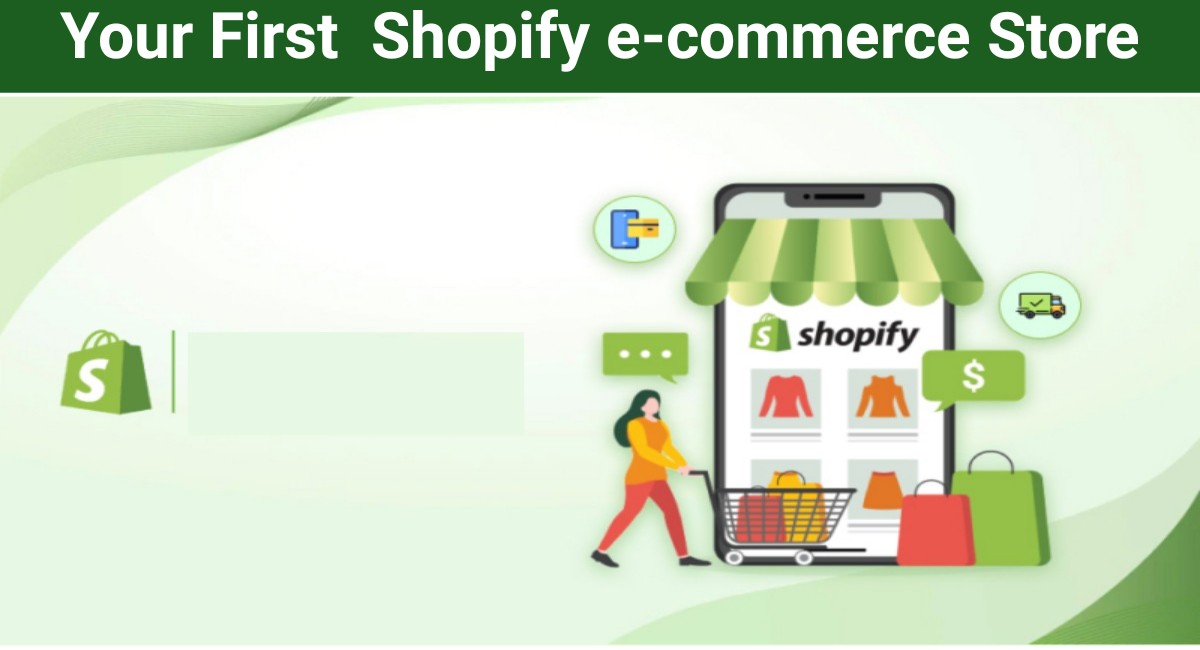
If you are considering creating an online store using Shopify, especially if you are going to bet on the advantages of drop shipping in your beginnings as an entrepreneur, you will have thousands of doubts about where to try your luck with your first project.
Starting from inexperience, because even if you have seen tutorials or have signed up for a specialized membership, one thing is theory and another is practice, it is very likely (and it has its logic) that you first try a project that requires a minimum investment, and then we will see if you scale or take advantage of what you have learned for another online store that can offer you a greater profit margin.
What if we told you that you can try your first steps as an online seller of physical products for free? Let’s be honest, we’re going to talk to you about Shopify, which is an e-commerce platform conceptually similar to WordPress, with many free apps and some essential ones that you can try at zero cost. As if that were not enough, Shopify offers its members the possibility of joining its partner program, thus having additional ways to generate income if you fall in love with the platform.
Also check: How to make Money from Home
The truth is that, if a friend asked us how to get started in the red ocean of e-commerce with almost no risk, the response of almost all marketers would be similar: “ try Shopify for free and choose a good dropshipper, or more than one”, and it is very likely that you do not even want to hear about giants like Amazon or, in countries where stores are allowed to open, Aliexpress.
What is Shopify and why is it not popular in some countries?
We already told you a moment ago that Shopify is an e-commerce platform, one of the most appreciated internationally, especially in the tough US market. But if the jargon scares you, we’re going to tell you that Shopify is to small business e-commerce what WordPress is to blogs.
The operation is also similar to creating a site with wordpress.org, but instead of plugins, what you are going to add to your site are apps, which you can search and compare in the Shopify app store . Shopify’s prices adapt to all budgets, as it starts with the Lite plan for $9 per month (about €8), which is what good shared hosting costs in the case of blogs. But with the advantage that you can try the platform for free for 14 days and there are many completely free apps and others that are paid in their more advanced versions.
Just as with wordpress.org, you can customize the design of your Shopify store as you like, through the use of templates or themes, the use of which is included in the membership and, of course, in the trial.
But Shopify strives to retain those who dare to try and offers a free academy, where you will find valuable advice both for your first project and for subsequent, more ambitious or competitive ones. And, to top it off, if you catch the fancy, you can offer yourself as a Shopify store designer for others, getting paid through their partner program , which includes the possibility of monetizing through affiliation, recommending paid apps.
The question of why Shopify is not so popular in countries like India is simple and sad: due to pure ignorance. Many venture into ecommerce platforms that depend on WordPress, without knowing everything they can get for free, included in their program (remember, from $9 per month, about €8).
Tips for Shopify Newbies
In case you’re wondering, Shopify and dropshipping are a good pair, which saves you management costs and the need to have a stock of stored products that you may not be able to sell. The key to ensuring that your customers are satisfied and repeat their purchases on your site is to select your suppliers very carefully. Look especially at delivery times and whether there could be problems with customs if your supplier is foreign.
For the rest, if you are still not sure, let us give you some advice to make your first e-commerce a success, in addition to the perfectionist selection of suppliers:-
- Before creating your store you must be clear about what products you are going to sell and who your ideal buyer persona or client is. Give them a name, write their gender, age, tastes and interests and think about how you are going to address them and present your products, so that they look at you favorably from the moment they land on your site and do not go to see your competition.
- To achieve the sale before your competition you need to do SEO. Don’t worry, because there are great Shopify apps for this task and they are free. We recommend Plug in SEO for its simplicity of use and its results and, now that you’re going all out in terms of visibility, Google Shopping, another app that’s great for you. Google Shopping will allow you to access Google Merchant, to display a catalog of the products you want, and is perfectly compatible with Google Ads, in case you decide to invest in SEM (if you have never done so, Google itself gives you credit for your first campaign).
- Offer as many payment options as possible, so as not to lose customers who are more fearful of using online credit cards, despite the existence of a secure platform.
- And, very importantly, if you live in a country like Spain remember that you must register as self-employed before launching your online store and starting to sell.
Bottom Line
Of course, your store will need an online marketing plan that you will manage as you wish, either by investing in some apps that multiply the purchase rate, or with advertising or the simple management of social networks, provided that you have some experience in these last two fields. Otherwise, you can always delegate to a professional or train yourself just before starting to set up your site.
The corollary of all this is that you can take your first steps as an e-commerce owner with hardly any investment and without the need to have advanced technical knowledge if you choose Shopify, as it offers you many resources such as free Shopify apps and templates, a free trial and even training so you don’t want to work with anyone else.
